Sir Joseph Banks, the eminent naturalist, was the first Freemason to set foot on Australian soil, he was at the time on a combined Royal Navy & Royal Society scientific expedition to the South Pacific Ocean on HMS Endeavour led by Captain James Cook.
Joseph Banks was initiated into Freemasonry at Somerset House Lodge No. 4 prior to 1768.
He was born on 24 February 1743, the son of William Banks, a wealthy Lincolnshire country squire and member of Parliament. His mother, Sarah, was the daughter of William Bate. Joseph had a younger sister, Sarah Sophia Banks, born in 1744.

A 1757 portrait of Banks with a botanical illustration, unknown artist but attributed to Lemuel Francis Abbott or Johan Zoffany.
IMAGE LINKED: wikimedia Attribution 4.0 International (CC BY 4.0)
During his boyhood, Joseph delighted in exploring the Lincolnshire countryside, resulting in his developing a keen interest in nature, history, and botany.
At the age of nine he enrolled at Harrow School, followed by Eton College in 1756. At the age of seventeen he became ill following inoculation with smallpox. On his recovery he did not return to school.
In late 1760 he entered the University of Oxford as a gentleman-commoner, matriculating at Christ Church College.
His studies were focussed on natural history, and he even went as far as to pay the Cambridge University botanist, Israel Lyons to deliver a series of lectures at Oxford in 1764.
In 1763 he went to stay at his mother’s house in Chelsea, but still attended the university until 1764, when he left without taking a degree.
The Royal Society
Joseph’s father had died in 1761, so, when he became twenty-one, he inherited his father’s extensive estate of Revesby Abbey in Lincolnshire.
He thus became the local squire and a magistrate, dividing his time between Lincolnshire and London.
His Chelsea base provided Joseph with an excellent opportunity to extend his botanical knowledge by attendance at the Chelsea Physic Garden of the Worshipful Society of Apothecaries.
He also frequented the British Museum where he met the Swedish naturalist Daniel Solander who was in London promoting the system of Carl Linnaeus.
Solander had travelled to England in June 1760 to promote the new Linnean system of classification.
In February 1763, he began cataloguing the natural history collections of the British Museum and was elected a Fellow of the Royal Society in June the following year.
Banks started to make friends with the scientific community and corresponded with Linnaeus as a result of an introduction made by Daniel Solander.
As Banks’ influence and reputation grew, he became an advisor to King George III, urging him to support voyages to undiscovered lands.
Naturally, Banks hoped that these voyages would create an opportunity for him to expand his botanical knowledge and expertise.

left: Daniel Charles Solander. Stipple engraving by J. Newton, 1784, after J. Sowerby..
right: Portrait of Carl Linnaeus (1707 – 1778),.
IMAGE LINKED: wellcome collection Attribution 4.0 International (CC BY 4.0)
Banks was elected to membership of the Royal Society in 1766. That year he accompanied an old school friend, Constantine Phipps, on a voyage to Newfoundland and Labrador aboard HMS Niger commanded by Sir Thomas Adams.
The purpose of the voyage was to transport a party of mariners to build a fort and survey the coast of Newfoundland and Labrador, today Canada’s most easterly province.
It also provided Banks the opportunity of recording the natural history of the area. He established his reputation by publishing the first Linnean description of the plants and animals of the region.
While there he noted what he thought were ‘penguins’ swimming around the ship at the Grand Banks.
He captured one of these specimens in Chateau Bay, Labrador. It was later identified as a great auk, a species which became extinct around 1844, due to over hunting for the bird’s feathers and oil. Banks also wrote descriptions of thirty-four species of birds.

A great auk. Etching.
IMAGE LINKED: wellcome collection Attribution 4.0 International (CC BY 4.0)
The Endeavour Voyage
Banks was asked to participate in a combined Royal Navy/Royal Society scientific expedition to the South Pacific Ocean on HMS Endeavour led by Captain James Cook.
Banks paid for eight others to join the expedition: the Swedish naturalist Daniel Solander, the Finish naturalist Herman Spöring, who also acted as Bank’s secretary and draughtsman, the artists Sydney Parkinson and Alexander Buchan, and four servants.
This was James Cook’s first voyage to circumnavigate the globe. Although the Endeavour voyage was officially a journey to Tahiti to observe the 1769 transit of Venus across the sun, it also had a more clandestine mission from the Royal Society to explore the South Pacific in the name of England.
Banks and Solander returned with a collection of plant specimens including an estimated one hundred new families and 1,000 new species of plants.

‘Venus Fort, erected by the Endeavour’s peoples to secure themselves during the observation of the Transit of Venus at Otaheite’ from A journal of a voyage to the South Seas, in His Majesty’s ship, the Endeavor…
IMAGE LINKED: wellcome collection Attribution 4.0 International (CC BY 4.0)
After sailing from London, the expedition stopped briefly at Madeira, and then continued to Rio de Janeiro.
Unfortunately, the expedition was faced with a setback when the Portuguese governor, Dom Antonio Rolim de Moura Tavare, refused to allow anyone leave the ship, except to acquire necessities.
However, Banks and Solander, risking arrest as spies or smugglers, sneaked ashore to collect specimens around the city.
It was while Banks was in Brazil that he made the first scientific description of bougainvillea, named after a contemporary of Captain Cook, the French admiral and explorer Louis Antoine de Bougainville.
The expedition proceeded to where a large number of specimens was collected, despite bitterly cold weather that killed two members of the crew.
In April 1769, the expedition reached Tahiti, where they stayed until July. During this time, Banks and Solander collected over 250 plant species, which enabled them to carry out the first extensive botanical study in Polynesia.
They collected over 250 plant species including the orchids Liparis revoluta and Oberonia equitans, and the flowering plant Ophiorrhiza solandri.
After viewing the transit of Venus on 3 June 1769, the expedition began mapping, exploring, and collecting specimens in the relatively unknown regions of New Zealand and the eastern coast of Australia (then called New Holland).
The Endeavour stopped for nine days at a bay on the coast of Australia. The botanists had been so successful that Cook decided to name the place Botany Bay, in honour of their extensive discoveries.
The Endeavour continued its voyage mapping the eastern coast of Australia but became holed on the Great Barrier Reef.
The ship was laid up at the Endeavour River for almost seven weeks to carry out repairs. During their stay in Australia the botanists made the first major collection of Australian flora, describing many new species.
Sydney Parkinson illustrated almost eight hundred specimens, which finally appeared in Banks’ Florigeum, eventually published in thirty-five volumes between 1980 and 1990.
Banks also noted the sighting of a kangaroo (‘kanguru’) in the 12 July 1770 entry in his diary.
On the way home the Endeavour stopped at the disease-ridden city of Batavia in Java, and at the Cape of Good Hope in Africa, finally arriving back in England on 12 July 1771.
The expedition had been very successful, and Banks’ discoveries made him famous.
The First Freemason in Australia
Even as Joseph Banks was about to set foot on Australian soil there was some dubiety as to whether or not he was a Freemason.
Custom dictated that he had been made a Freemason ‘prior to 1768’. The lack of certainty was largely due to the poor record keeping that prevailed among English and other Lodges in the United Kingdom at the time.
Indeed, in Scotland, such shortcomings had contributed to an unseemly controversy concerning the authenticity of a painting purporting to show Robert Burns being made the Bard of Canongate Kilwinning Lodge in Edinburgh (see Brother Wade’s article in The Square March 2019 printed edition on this topic).
Banks was supposed to have been initiated into the Old Horne Lodge, later to become The Royal Somerset and Inverness Lodge No 4.
This Lodge had played an extremely important part in the formation of Premier Grand Lodge in the first part of the 18th century, and originally known as the Rummer and Grapes Lodge which met in Channel Row, not far from Desagulier’s home at the time.
The Lodge at the Rummer and Grapes in Channel Row is now The Royal Somerset House & Inverness Lodge, No. 4., named Old Horn Lodge in 1767, it united with Somerset House Lodge in 1774 and took that name.
In 1828, it united with Royal Inverness Lodge, the first Lodge warranted under the United Grand Lodge, and took its present name.
The Rummer and Grapes Lodge was, unlike the other three London Lodges that formed Premier Grand Lodge, mainly a speculative, as opposed to operative Lodge.
It was close to the Palace of Westminster and had many influential members. It was, without doubt, the most important of the four founding Lodges.
In the 1720s, more than thirteen members were aristocrats; approximately twenty were members of The Royal Society; over twenty were magistrates, and almost a third were members of Parliament.
A number held active or honorary military rank, including two general officers and at least ten colonels.
Five of the leading members had direct blood links to the Crown; four were grandsons of Charles II. This was the pedigree of the Lodge to which Joseph Banks was initiated.
Various scholars have attempted to establish the date of his initiation into The Horne Lodge.
Robert Freke Gould confirmed that he was a member of ‘The Olde Horne Inn No 4’ in his History of Freemasonry.
A closer approximation of the date of Banks’ initiation can be made by reference to his contemporary Freemasons, such as Thomas Dunkerley (the natural son of George III), Lord Gormastone, Viscount Hampden, James Heseltine, and Admiral Peter Parker, for instance.
Banks may have joined the lodge when he was at Oxford University, though one might have expected that he would have achieved some of his scientific accomplishments, which the Lodge authorities might have deemed a necessary qualification for being admitted into the august body of Horne lodge No. 4.
He came from a wealthy aristocratic family and was elected a member of The Royal Society in 1766. Whatever the situation, we should accept the assessment of John Hamill, former curator of The Library and Museum of Freemasonry at Great Queen Street, that Joseph Banks was initiated into Freemasonry ‘prior to 1768’.
Thus, he was definitely a Freemason when he set foot on Australia.
Masonic correspondence has established that he was a member of Lodge Witham, in the Province of Lincolnshire, in March 1801.
He remained a member until his death on 19 June 1820. Indeed he was approached by Samuel Thorold in 1801, with a plea for Banks to become Deputy Grand Master of the Province, due to the neglect shown by the then incumbent.
Not surprisingly, Banks declined on account of his affliction with gout, and the many commitments that he had in the scientific world, not the least being his presidency of The Royal Society.
Not surprisingly, some Lodges have been named after him: Sir Joseph Banks Daylight Lodge No 9828(Lincolnshire) and Lodge Sir Joseph Banks No 300 (New South Wales).
His reputation runs high in Australia, which regards him as the father of the nation.
The Society of the Dilettanti
Banks had hoped to join Cook’s second voyage due to start on 13 May 1772, but the Admiralty objected to Banks’ requirement for scientific and other items and withdrew his permission to sail.
However, he wasn’t deterred and organised an expedition with Solander aboard the ship Sir Lawrence to the Isle of Wight, the western islands of Scotland and Ireland.
They were the first scientific visitors to the Inner Hebridean island of Staffa. In 1772 he led the first British expedition to Iceland.
Banks was fascinated by volcanoes, and they became the focus of much of the expedition, including the scaling of Mount Hekla and a visit to the Great Geyser, which can eject boiling water up to seventy metres in the air.
They returned to London via Edinburgh where Banks and Solander were interviewed by James Boswell. He returned with many more specimens and stored them at his house in London and began work on his Florilegium which was not published until the 20th century.
In 1773, he toured Holland with Charles Greville and visited Wales with Solander and Paul Sandby, an artist. Back home, he shifted to a bigger house to accommodate his ever-growing collection of plant specimens.
He communicated with many members of the scientific community at home and abroad. In 1773 he was elected a foreign member of the Royal Swedish Academy of Sciences.
He extended his interests beyond the field of natural history, following his election to the Society of the Dilettanti in 1774.
This society had been founded in 1734 by noblemen and scholars who had made the Grand Tour. Its purpose was to promote the art and culture of classical Greek and Roman society.
It was closely associated with Brooks’s, one of London’s most exclusive gentlemen’s clubs. The society quickly became wealthy, through a system in which members made contributions to various funds to support building schemes and archaeological expeditions.
The Society of Dilettanti aimed to influence and refine the public taste of the country; from the 1740s, it began to support Italian opera.
The Society worked towards the formation of a public academy, and from the 1750s, it was the prime mover in establishing the Royal Academy of Arts.
By 1775, the club had accumulated enough money for a scholarship fund to support student travel to Rome and Greece, or archaeological expeditions.
Some of these expeditions resulted in publications such the Ionian Antiquities, which became a major influence in the study of neo-classicism in Britain.
Banks was secretary of The Society of Dilettanti from 1778 to 1797.
He was elected president of the Royal Society on 30 November 1778, a post he occupied with great authority for more than 41 years.

Print of Sir Joseph Banks as President of the Royal Society
IMAGE LINKED: wikimedia Attribution 4.0 International (CC BY 4.0)
He married Dorothea Hugessen, daughter of W.W. Hugessen, in March 1779. The couple lived in a large house at 32 Soho Square, which remained as their London residence for rest of Banks’ life.
At his home he welcomed scientists, students, and contemporary authors, as well as many eminent foreign visitors.
His sister Sarah Sophia Banks lived with them, and he had a number of librarians in succession, the first of which was Daniel Solander.
His Revesby Abbey estate had four hundred tenanted farms and thousands of acres. He engaged in the development of canals and field drainage, improving Lincolnshire’s infrastructure, and increasing the economic wealth of the county.
At Horncastle he opened a dispensary which provided medical treatment to those who could not afford it.
He was also successful in petitioning the government to introduce licenses for those wishing to become doctors. He increased the acreage of woodland on his estate, managing them on a rotational system. The resulting timber sold at premium prices.
In 1779, Banks leased an estate, called Spring Grove, which had been the residence of Elisha Biscoe.
He eventually bought the estate from Biscoe’s son in 1808. The thirty-four acres of the estate ran along the northern side of the London Road at Isleworth.
The grounds of the estate contained a natural spring, which was a significant feature of the magnificent botanical garden that he created, using plants that he had collected from all over the world.
The house served as intermediate storage facility for plants intended for the nearby Kew Gardens.
Banks was an advisor to King George III on matters related to the Royal Botanic Gardens at Kew. Initially his advice was given informally, but in 1797 the position was formalised.
Banks arranged for explorers and botanists to visit many parts of the world, thus enabling Kew Gardens to establish itself as the world’s leading botanical garden.
The expeditions that he initiated included that of George Vancouver to the Pacific Northwest, and Allan Cunningham’s voyages to Brazil and the north and northwest coasts of Australia.
Banks also initiated the transplanting of breadfruit from the South Pacific to the Caribbean islands.
One such voyage had the misfortune of resulting in the infamous mutiny on board William Bligh’s ship the Bounty.
Among his many other interests, Banks was an important financial supporter of William Smith, who spent many years creating the first geological map of England.

James Gillray
IMAGE LINKED: wikimedia Attribution 4.0 International (CC BY 4.0)
Banks was made a baronet in 1781, and invested with the Order of the Bath, prompting Gillray’s caricature shown above.
He also produced one of the earliest Aboriginal Australian word lists compiled by a European.
Banks received recognition from many quarters for his scientific work. He was elected a member of the American Philosophical Society in 1787, and a foreign honorary member of the American Academy of Arts and Sciences in 1788.
At home he served as a trustee of the British Museum for 42 years and was appointed high sheriff of Lincolnshire in 1794.
Sir Joseph actively carried out improvements on his estate at Revesby by enclosing, draining and improving the local fenland.
Unfortunately, his health began fail at the beginning of the 19th century. In 1805, the use of his legs was so impaired that he had to be wheeled to meetings in a chair.
Fortunately, his brain had lost none of its power, and he was as alert and positive in his thinking as ever.
He had been a member of the Society of Antiquaries for most of his life, developing an interest in archaeology later in life.
In 1808, Banks was made an honorary founding member of the Wernerian Natural History Society of Edinburgh a learned society interested in the broad field of natural history.
Papers presented and published on various topics such as mineralogy, plants, insects, and scholarly expeditions.
He died on 19 June 1820, at Spring Grove House. He was buried at St Leonard’s Church, Heston. Lady Banks survived him, but they had no children.
He demonstrated his support for international cooperation in science by keeping open the lines of communication with European scientists during the Napoleonic Wars.
He was honoured by many place names in South Pacific: Banks Peninsula on the South Island, New Zealand; the Banks Islands in modern-day Vanuatu; the Banks Strait between Tasmania and the Furneaux Islands, and the Sir Joseph Banks Group in South Australia.
The Canberra suburb of Banks, the electoral division of Banks, and the Sydney suburbs of Bankstown, Banksia, and Banksmeadow are all named after him.

Posted on eBay, and valued at $165 Australian
Banks’ image was displayed on the Australian five dollar note when it was introduced in 1967, but was later replaced by polymer currency.
On 16 August 2018, the 250th anniversary of Captain Cook setting sail for the South Pacific in HMS Endeavour was commemorated by the issue of a set of Australian stamps.
The one of Sir Joseph Banks is by Sir Joshua Reynolds, showing Phaethon rubricauda (red-tailed tropicbird) by Sydney Parkinson and Passiflora aurantia (red passionflower) outline drawing by Sydney Parkinson finished by Polydore Nodder.

Collect GB Stamps
A conservatory, containing many plants of the type that Banks brought back from his voyages around the world was opened in Woodside Wildlife Park in 2016. It was named Endeavour.
He is commemorated by a plaque in Lincoln Cathedral, and the London County Council placed a blue plaque on his house at 32 Soho Square.
A portrait of Banks, commissioned by the Corporation of Boston in 1814, hangs in the Council Chamber of the Guildhall Museum.
The Sir Joseph Banks Centre can be found at Horncastle, not far from the Revesby Abbey estate.
Sir Joseph Banks puts in an appearance in the historical novel Mutiny on the Bounty by Charles Nordhoff and James Norman Hall.
He is also identified as a contact with British naval intelligence in the historical novel Post Captain, by Patrick O’Brien, and several other novels.
Banks recorded thirty years of his life in his journal. An archive containing 8800 digital images related to Joseph Banks is maintained on the website of the State Library of New South Wales.
Article by: Nigel Wade
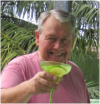
Educated at The Stationers’ Company's School, and the University of London.
A regular writer for the school magazine and ‘The Old Stationer’; member of the Brentwood Writers’ Circle.
Nigel has written one children's book ‘City Fox’, and various articles for ‘The Square Magazine’.
Recent Articles: in people series
 Celebrate the extraordinary legacy of The Marquis de La Fayette with C.F. William Maurer's insightful exploration of Lafayette's 1824-25 tour of America. Discover how this revered leader and Freemason was honored by a young nation eager to showcase its growth and pay tribute to a hero of the American Revolution. |
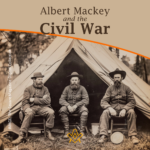 Albert Mackey and the Civil War In the midst of the Civil War's darkness, Dr. Albert G. Mackey, a devoted Freemason, shone a light of brotherhood and peace. Despite the nation's divide, Mackey tirelessly advocated for unity and compassion, embodying Freemasonry's highest ideals—fraternal love and mutual aid. His actions remind us that even in dire times, humanity's best qualities can prevail. |
 Discover the enduring bond of brotherhood at Lodge Dumfries Kilwinning No. 53, Scotland's oldest Masonic lodge with rich historical roots and cultural ties to poet Robert Burns. Experience rituals steeped in tradition, fostering unity and shared values, proving Freemasonry's timeless relevance in bridging cultural and global divides. Embrace the spirit of universal fraternity. |
 Discover the profound connections between John Ruskin's architectural philosophies and Freemasonry's symbolic principles. Delve into a world where craftsmanship, morality, and beauty intertwine, revealing timeless values that transcend individual ideas. Explore how these parallels enrich our understanding of cultural history, urging us to appreciate the deep impacts of architectural symbolism on society’s moral fabric. |
 Discover the incredible tale of the Taxil Hoax: a stunning testament to human gullibility. Unmasked by its mastermind, Leo Taxil, this elaborate scheme shook the world by fusing Freemasonry with diabolical plots, all crafted from lies. Dive into a story of deception that highlights our capacity for belief and the astonishing extents of our credulity. A reminder – question everything. |
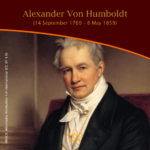 Dive into the extraordinary legacy of Alexander Von Humboldt, an intrepid explorer who defied boundaries to quench his insatiable thirst for knowledge. Embarking on a perilous five-year journey, Humboldt unveiled the Earth’s secrets, laying the foundation for modern conservationism. Discover his timeless impact on science and the spirit of exploration. |
 Voltaire - Freethinker and Freemason Discover the intriguing connection between the Enlightenment genius, Voltaire, and his association with Freemasonry in his final days. Unveil how his initiation into this secretive organization aligned with his lifelong pursuit of knowledge, civil liberties, and societal progress. Explore a captivating facet of Voltaire's remarkable legacy. |
 Robert Burns; But not as we know him A controversial subject but one that needs addressing. Robert Burns has not only been tarred with the presentism brush of being associated with slavery, but more scaldingly accused of being a rapist - a 'Weinstein sex pest' of his age. |
 Richard Parsons, 1st Earl of Rosse Discover the captivating story of Richard Parsons, 1st Earl of Rosse, the First Grand Master of Grand Lodge of Ireland, as we explore his rise to nobility, scandalous affiliations, and lasting legacy in 18th-century Irish history. Uncover the hidden secrets of this influential figure and delve into his intriguing associations and personal life. |
 James Gibbs St. Mary-Le-Strand Church Ricky Pound examines the mysterious carvings etched into the wall at St Mary-Le-Strand Church in the heart of London - are they just stonemasons' marks or a Freemason’s legacy? |
 Freemasonry and the Royal Family In the annals of British history, Freemasonry occupies a distinctive place. This centuries-old society, cloaked in symbolism and known for its masonic rituals, has intertwined with the British Royal Family in fascinating ways. The relationship between Freemasonry and the Royal Family is as complex as it is enduring, a melding of tradition, power, and mystery that continues to captivate the public imagination. |
 A Man Of High Ideals: Kenneth Wilson MA A biography of Kenneth Wilson, his life at Wellington College, and freemasonry in New Zealand by W. Bro Geoff Davies PGD and Rhys Davies |
 In 1786, intending to emigrate to Jamaica, Robert Burns wrote one of his finest poetical pieces – a poignant Farewell to Freemasonry that he wrote for his Brethren of St. James's Lodge, Tarbolton. |
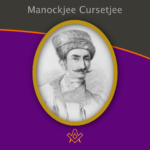 Alex Lishanin explores Mumbai and discovers the story of Lodge Rising Star of Western India and Manockjee Cursetjee – the first Indian to enter the Masonic Brotherhood of India. |
 Aleister Crowley - a very irregular Freemason Aleister Crowley, although made a Freemason in France, held a desire to be recognised as a 'regular' Freemason within the jurisdiction of UGLE – a goal that was never achieved. |
 Sir Joseph Banks – The botanical Freemason Banks was also the first Freemason to set foot in Australia, who was at the time, on a combined Royal Navy & Royal Society scientific expedition to the South Pacific Ocean on HMS Endeavour led by Captain James Cook. |
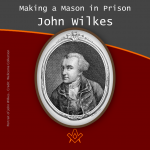 Making a Mason in Prison: the John Wilkes’ exception? |
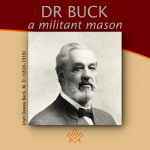 "To be a good man and true" is the first great lesson a man should learn, and over 40 years of being just that in example, Dr Buck won the right to lay down the precept. |
 Elias Ashmole: Masonic Hero or Scheming Chancer? The debate is on! Two eminent Masonic scholars go head to head: Yasha Beresiner proposes that Elias Ashmole was 'a Masonic hero', whereas Robert Lomas posits that Ashmole was a 'scheming chancer'. |
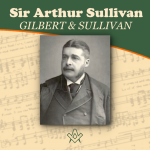 Sir Arthur Sullivan - A Masonic Composer We are all familiar with the comic operas of Gilbert and Sullivan, but did you know Sullivan was a Freemason, lets find out more…. |
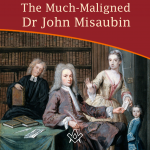 The Much-Maligned Dr John Misaubin The reputation of the Huguenot Freemason, has been buffeted by waves of criticism for the best part of three hundred years. |
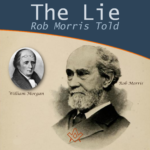 Was William Morgan really murdered by Masons in 1826? And what was the lie Masonic author Rob Morris told? Find out more in the intriguing story of 'The Morgan Affair'. |
 Lived Respected - Died Regretted Lived Respected - Died Regretted: a tribute to HRH The Prince Philip, Duke of Edinburgh |
 Who was Moses Jacob Ezekiel, a Freemason, American Civil War Soldier, renowned sculptor ? |
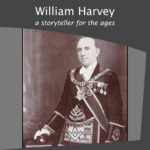 A Masonic author and Provincial Grand Master of Forfarshire in Scotland |
 Who was Philip, Duke of Wharton and was he Freemasonry’s Loose Cannon Ball ? |
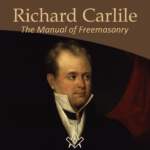 Richard Carlile - The Manual of Freemasonry Will the real author behind The Manual of Freemasonry please stand up! |
 Nicholas Hawksmoor – the ‘Devil’s Architect’ Nicholas Hawksmoor was one of the 18th century’s most prolific architects |
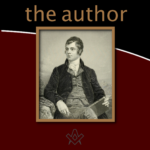 By Bro. Anthony Oneal Haye (1838-1877), Past Poet Laureate, Lodge Canongate Kilwinning No. 2, Edinburgh. |
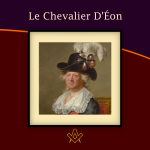 The Curious Case of the Chevalier d’Éon A cross-dressing author, diplomat, soldier and spy, the Le Chevalier D'Éon, a man who passed as a woman, became a legend in his own lifetime. |
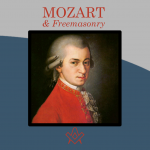 Mozart Freemasonry and The Magic Flute. Rev'd Dr Peter Mullen provides a historical view on the interesting topics |
masonic knowledge
to be a better citizen of the world
share the square with two brothers

click image to open email app on mobile device








